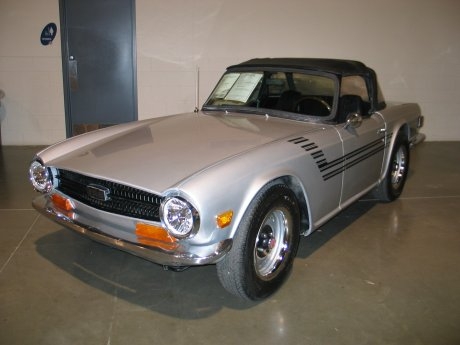
“I’m thinking of getting into collector cars. What’s the best car to start with?”
It’s a question we are asked all the time. There is no correct answer, just as there is no “right” choice for which pinot noir to pair with salmon, or which running shoes to wear for a marathon. There is a simple place to start, however. And that is, “Get ready for an adventure.”
Familiarizing yourself with old cars is no different than engaging in any hobby for the first time, whether it is learning about medieval tapestries or unraveling the mysteries of salt-water fly fishing. You have to be willing to embrace the experience with a sense of humor and admit just how little you know. A lifetime of driving modern cars does not prepare you for an hour behind the wheel of something built in the ‘50s or ‘60s.
Old cars require that you pay attention to them. Most of them have their own mysterious starting routines, which are different when they are cold and when they are hot. Some like lots of choke, others none. Weber-cabureted cars have throttle accelerator pumps, so a couple of quick stabs at the gas pedal are part of the routine. SU carburetors don’t have accelerator pumps, so pushing the throttle in and out doesn’t make any difference.
Old cars run differently when they have just been started than they do when they are up to temperature. Most of them like to run with the water temperature at about 180 degrees — until your temperature gauge hits that number, your old car is not ready to accelerate hard.
Many modern cars have no gauges at all, aside from a speedometer, fuel gauge and possibly a tachometer. They rely on warning lights that come on if engine temperature or oil pressure are outside the operating norms.
With old cars, you have to keep your eye on the needles in the oil pressure and the water temperature gauges. If the engine starts to run hot, there is no warning light to alert you. If your gauge runs up to 212 degrees and you don’t catch it, you may not notice something is amiss until steam is pouring out from under your hood. You’ll come to understand that things like idle speeds change on old cars for no apparent reason. Some days the car will simply idle faster, so you learn to keep a screwdriver in the car to make on-the-spot adjustments.
By modern standards, old cars have terrible brakes. Drum-braked cars often take two or three applications of the pedal before the brake shoes seem to wake up and realize you are actually asking them to do something. And even then, the stopping power of an old car is substantially less than that of the most modest Kia on the road today.
Handling is best described as “theoretical,” with slipping and sliding around turns on skinny tires attached to primitive suspensions being the norm. That’s part of the excitement of driving an old car – at 40 mph, you can feel like you are defying death, where a new car could go 100 mph on the same stretch of road with no fuss or muss.
First Choice
So what’s the best way to enter the collector car world? I would suggest you buy a modest but interesting car, like a chrome-bumper MGB (1968-74) or a small-bumper TR6 (1969-74). $20,000 should be enough for a fine example of either.
Locate the local car club for the MG or Triumph and join it. Go on as many tours as you can, and learn about the sense of camaraderie that old cars engender.
Be sure the car you buy is properly set up, with brakes and suspension in top shape. Too often we see newbies pick up cars that drive poorly, and they simply don’t know that the car itself needs a suspension rebuild.
Once you have a few months under your belt with your old car, your taste will be refined. You will know whether you prefer an open to a closed car. You will start to feel comfortable with the demands the car makes of you each time you use it. In fact, you will begin to look forward to the starting routine once you have mastered it, as you will be the one who knows how to get the car up and running.
Let yourself into the world of collecting easy. Mastering any new skill — in this case the driving of an old car — is not a simple thing. Both the Triumph and the MG are straightforward cars that offer a true vintage feel at an affordable price.
Then, if you enjoy the experience, you will be ready to move up in the collector car world, and perhaps someday that will be you in your Lancia Aurelia SpIder America on the starting ramp of the Mille Miglia in Brescia. But you have to start somewhere.
Those are my suggestions. What are yours?